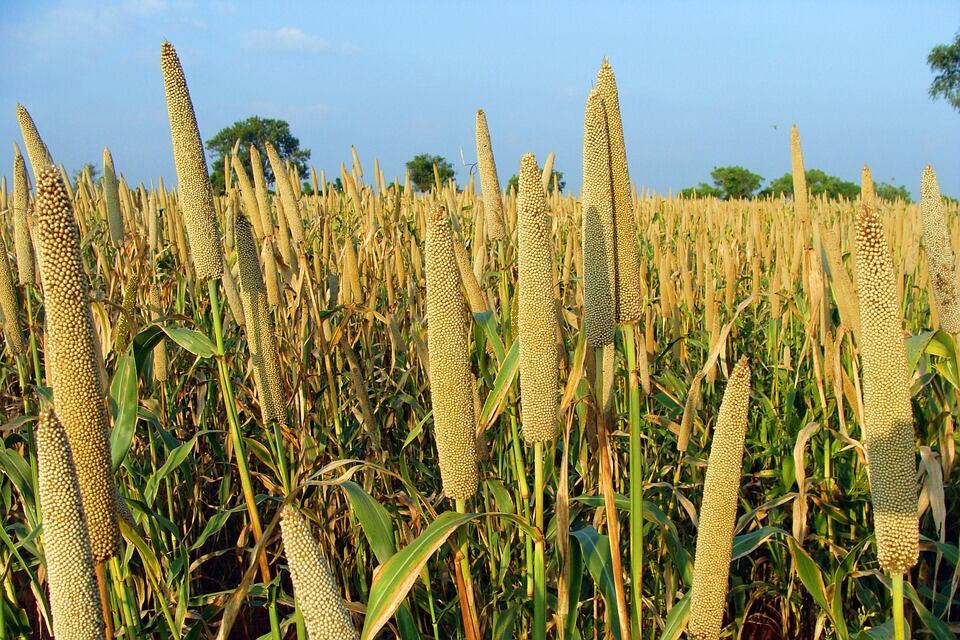A team of 65 scientists from 30 research institutions sequenced the pearl millet (or bajra or bajri) gene map to understand the crop’s coping strategies in some of the most arid regions of the world, particularly Africa and Asia.
Pearl millet has the potential to deliver a good harvest even in temperatures of over 42°C and extreme drought conditions that usually destroy rice, maize and wheat crops.
Heat + drought = crop death

Pearl millet (Pennisetum glaucum) is rich in protein, fibre and essential micronutrients like iron, zinc and folate.
Studies have found it has the potential to fight iron deficiency, the major cause of anemia that affects the health and development of a third of the global population.
Though not the most widely consumed grain, pearl millet provides a major food staple for more than 90m people living in the western parts of India and in Africa, notably in the region most threatened by the advancing Sahara Desert. India is the largest producer of pearl millet, followed by Africa.
“Most cereals cannot support temperatures over 30°C to maximum 35°C when they start forming their grain, whereas pearl millet will fill its grain in air temperatures of up to 42°C,” said Professor Rajeev Varshney from the International Crops Research Institute for Semi-Arid Tropics (ICRISAT) that coordinated the Pearl Millet Genome Sequencing Consortium.
“Compared to other cereals, pearl millet has a more diverse repertoire of genes for natural wax proteins, which act as thermal protection for the plant,” he added, noting this is a crucial trait in light of the forecasted heat waves in years to come.
According to researchers, rising temperatures will lead to a drop in crop production.
However, genetic research for pearl millet has been inadequate to-date and breeders have had limited information on how to develop high yielding superior varieties and hybrids that respond to farmers' constraints.
The possibilities of neglected crops
The study – published in Nature Biotechnology – highlights the importance of finding other drought-resistant crops that can also withstand the impending global climate change and avoid a deepening food crisis.
The consortium – co-led by ICRISAT in Telangana; BGI- Shenzhen in China; and the French National Research Institute for Sustainable Development (IRD); with participation of the University of Vienna – additionally sequenced 994 further breeding lines and wildtypes to reveal molecular properties hinting to drought resistance mechanisms on a genome basis.
“Identifying better genes for heat tolerance in pearl millet can also help other crops like wheat, rice and maize become more climate change ready, showing the importance of investing in so called ‘orphan’ or neglected crops,” said David Bergvinson, director general of ICRISAT.
Study:
Pearl millet genome sequence provides a resource to improve agronomic traits in extreme environments
Authors: Rajeev K Varshney, Chengcheng Shi, Mahendar Thudi, et al
Nature Biotechnology, 2017; DOI: 10.1038/nbt.3943

